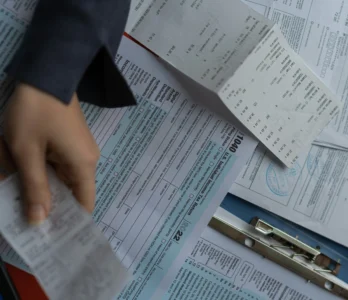High-yield savings accounts are known to pay higher interest rates than traditional savings accounts, yet 82% of Americans don’t keep their funds in this type of savings account. Some of the likely reasons for this are that many believe there must be a catch for high-yield savings accounts to offer such high returns, or they prefer to stick to the familiar.
If you’re among those struggling to decide which savings account to open, exploring the main high-yield savings account benefits and drawbacks can help you reach the final decision. In this article, you’ll find the main pros and cons of a high-yield savings account (HYSA), plus a worthy alternative to help guide your decision-making.
Main Features of High-Yield Savings Accounts
You can typically open a high-yield savings account at online banks and credit unions. Because they offer significantly higher interest rates than traditional savings accounts, they’re a good choice when you want to save a larger amount in a shorter period. For example, you can use them for covering short-term savings goals, such as:
- Vacation
- Downpayment for a house or car
- Home improvement project
- Wedding
They’re also a great option for creating an emergency fund since they allow you to withdraw money whenever you need it, although most accounts include monthly withdrawal limits. Plus, these accounts are insured by either the Federal Deposit Insurance Corporation (FDIC) or the National Credit Union Administration (NCUA), depending on your financial institution.
Cons of a High-Yield Savings Account
There are several high-yield savings account pros and cons you should consider before choosing which savings account to open. The main cons of a high-yield savings account include:
- Withdrawals limits
- Limited money access
- Minimum balance requirements
- Variable interest rates
Withdrawals Limits
Like most savings accounts, high-yield savings accounts usually include monthly withdrawal limits. The limit is typically six withdrawals per month, and if you exceed it, you may have to pay a fee.
This rule is a result of Regulation D—a Federal Reserve Board rule that imposed a limit on the number of withdrawals and transfers per month. While the Federal Reserve waived this rule in 2020, many financial institutions still uphold it, so check if your bank/credit union charges fees to ensure you don’t exceed the allowed number of monthly withdrawals or transfers.
Limited Money Access
When comparing a high-yield savings account vs. a regular savings account, a HYSA typically offers fewer withdrawal options. It usually doesn’t come with a debit card or allow you to withdraw money from an ATM.
The bank that provides your high-yield savings may also not offer checking accounts. So, if you want to open a checking account and connect it to your savings account, you’ll have to go to another financial institution. This means it’ll probably take longer to transfer funds from one account to the other.
Still, many online banks nowadays include mobile banking apps that help circumvent these limitations.
Minimum Balance Requirements
Sometimes, high-yield savings accounts may have minimum balance requirements, which means you have to maintain the required balance to earn the premium interest rate. For example, if an account has a minimum balance requirement of $5,000, but your balance is $2,000, the amount of interest you’ll earn will be lower than regular.
Some banks may also impose minimum deposit requirements, often ranging from $100 to $2,500. However, most top high-yield savings accounts include no minimum balance or minimum deposit requirements.
Variable Interest Rates

High-yield savings account interest rates vary depending on the Federal Reserve benchmark interest rate changes. This means your earnings follow the market trends—if the interest rate goes up, you earn more, but if it goes down, you earn less.
This is why certificates of deposit (CDs) are often considered a better option if you’re saving for long-term financial goals. They offer a fixed interest rate, meaning your earnings will remain consistent until your CD matures.
Pros of a High-Yield Savings Account
While HYSAs come with a few disadvantages, the benefits they offer may make them a worthy money-saving option. Here are the main advantages of growing funds in a high-yield savings account:
- High annual percentage yield
- Daily compound interest
- Low-risk investment
High Annual Percentage Yield

High-yield savings accounts pay an annual percentage yield (APY) of 4–5% or more, while the national average rate on savings is 0.45%, according to the FDIC. This means you’ll earn more interest on your savings over time if you opt for a HYSA. For illustration, here’s how much you’d earn after ten years if you put $5,000 in a high-yield savings account vs. a regular savings account:
- High-yield with 4% APY—Around $2,456.96
- Traditional with 0.46% APY—Around $256.52
However, the exact amount of earnings depends on various factors like how much the interest rates have changed over the years or how often your bank compounds interest.
Daily Compound Interest
Banks can compound interest on a daily, monthly, or quarterly basis. The more often interest compounds, the more you’ll earn.
So, how often do high-yield savings accounts pay interest? In most cases, HYSAs pay daily interest, resulting in higher earnings in the long run.
Low-Risk Investment
While investments like stocks or private equity can help you earn significantly more money than HYSAs, they also carry a higher risk—if your investment loses value, you lose money. Meanwhile, high-yield savings accounts are low-risk investments, meaning your earnings are guaranteed and your funds are insured up to $250,000 by the FDIC (for banks) or NCUA (for credit unions).
However, you can still lose some money in a high-yield savings account if your bank fails and the funds in your account exceed the insured amount or due to:
- Fees
- Inflation
- Changing interest rates
Can You Take Money Out of a High-Yield Savings Account?
The short answer is yes—high-yield savings accounts have high liquidity, meaning you can take money out of the account whenever you need it. However, most banks usually impose a monthly withdrawal limit.
This feature makes HYSAs a good option for creating an emergency fund because you can take your savings out of the account whenever you need them without incurring fees on early withdrawals.
However, if you wish to avoid paying any fees but also save money and build credit, you may want to consider a credit-building savings account as a worthy alternative. Such an account allows you to keep your funds safe, earn interest, and establish a strong financial future by building a good credit profile.
What’s the Catch With High-Yield Savings Accounts?
While it’s true that a HYSA can help you grow funds faster than a regular savings account, there’s more than one high-yield savings account catch to be aware of.
Many people put their money and trust in FDIC-insured savings accounts. While FDIC insurance is crucial in bank failure cases, it does not protect your funds from fraud. Nowadays, financial scams are much more frequent than bank failures, calling for a multi-layered, innovative security system.
In addition to bank failure insurance, you want a high-yield savings account that blocks transactions to or from unreliable payment platforms. Many traditional banks offering HYSA allow connection to untrustworthy payment apps, such as Zelle and Venmo, often targeted by scammers.
The only savings account that provides absolute fraud protection is FortKnox—the best option for saving money and safeguarding funds against numerous financial scams.





